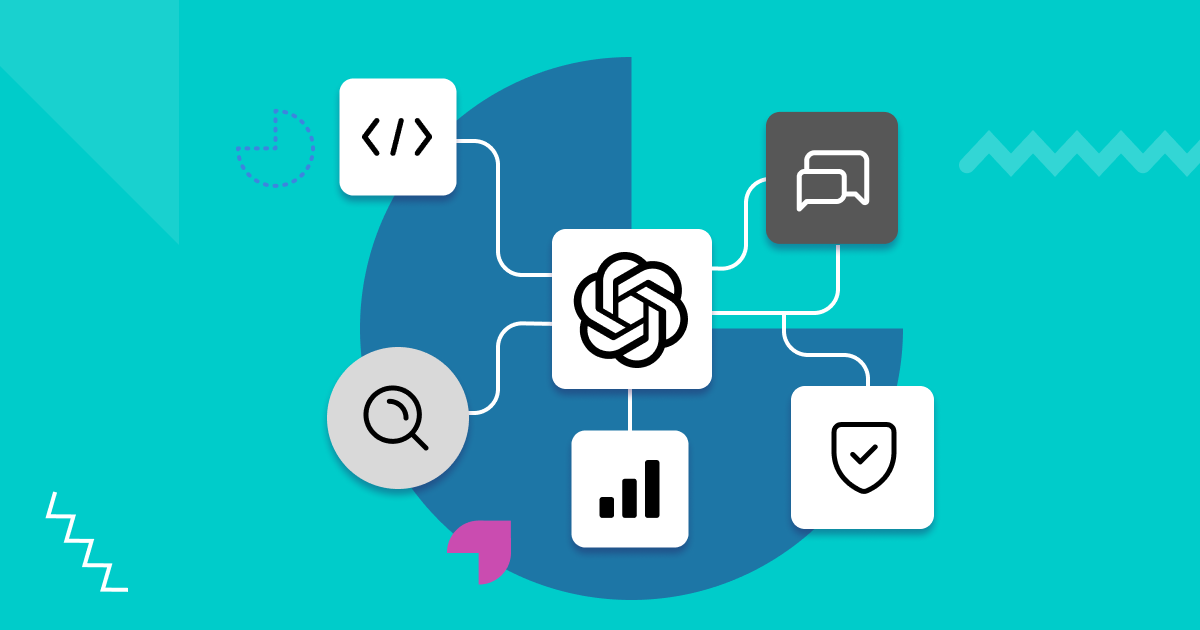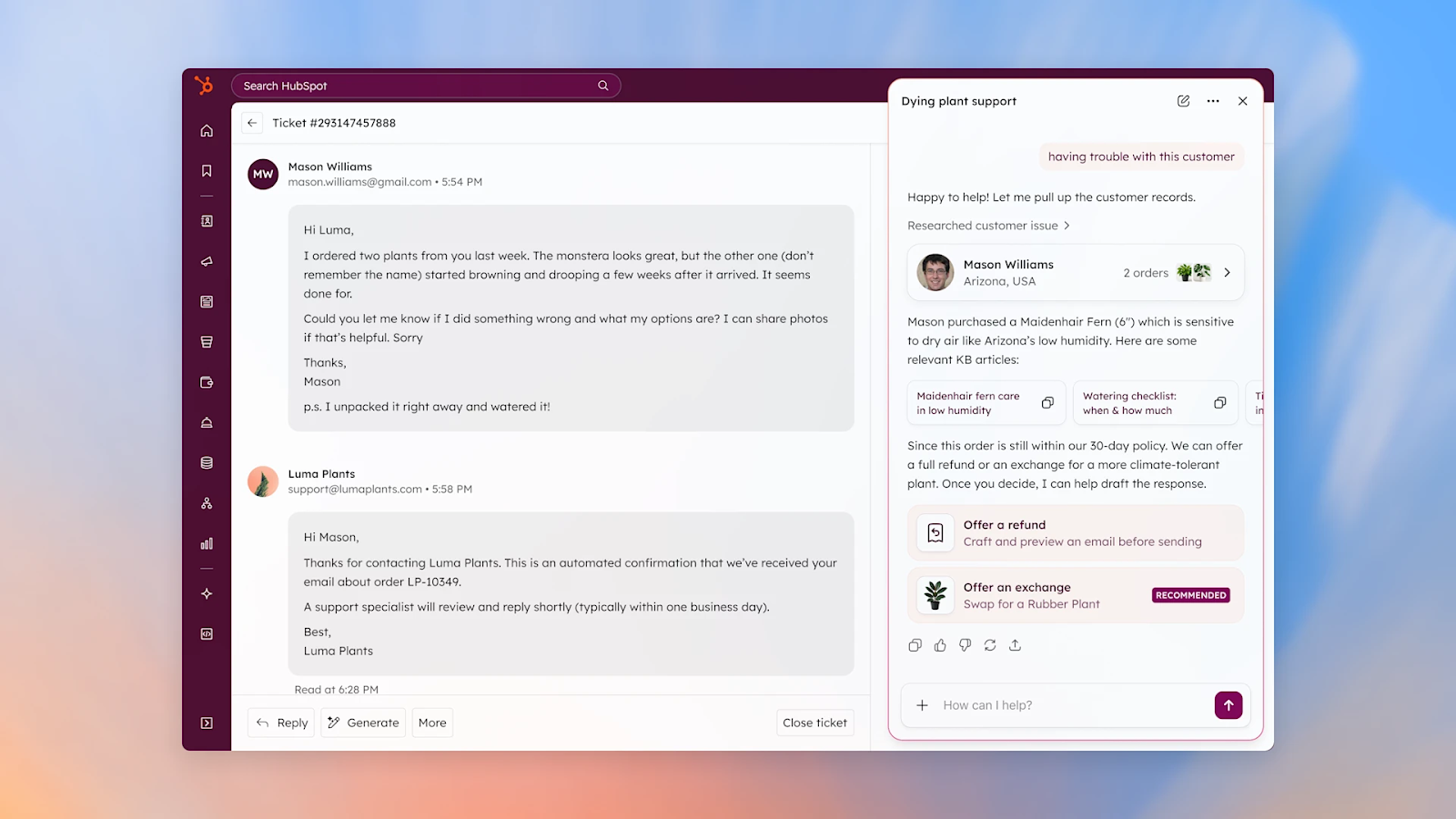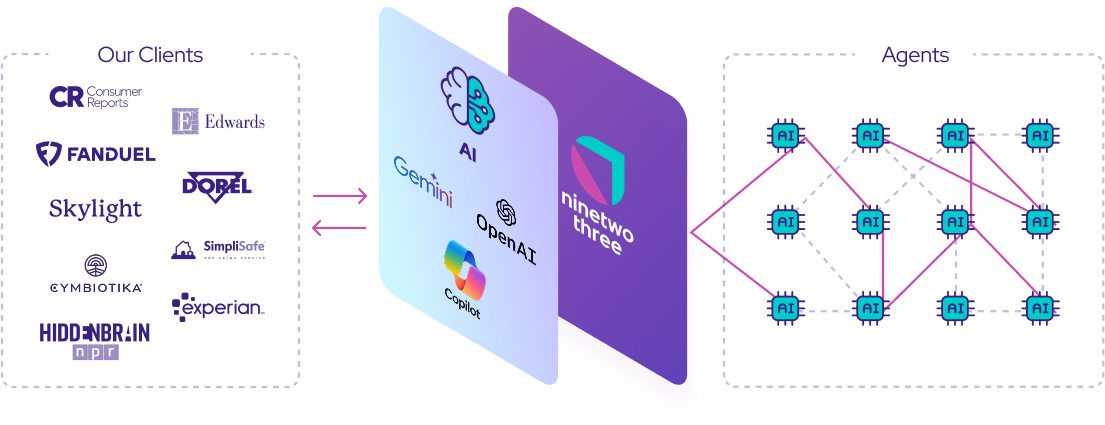
Another day, another OpenAI release, and another endless buzz, endless hot takes, and an assumption that the future had just arrived. This time, we’re talking about the latest tool OpenAI presented to all of us - AgentKit.
It’s marketed as a toolkit that makes building and deploying intelligent agents easier than ever with visual, drag-and-drop, and supposedly ready to revolutionize how teams automate work. And many companies that have already tried OpenAi agent builder only fuel that story:
“Agent Builder transformed what once took months” - says Ramp. “Agent Builder allowed us to orchestrate agents in a whole new way, with engineers and subject matter experts collaborating all in one interface,” - agrees LY Corporation.
But at NineTwoThree, we work with businesses whose operations and data can’t afford blind faith in hype cycles. Our question today isn’t “Is AgentKit exciting?”, because yes, it is. Our question is whether AgentKit is a right fit for businesses, and if it is, what kind of businesses.
So, let's cut through the noise and see where AgentKit shines, where it falls short, and why you should or shouldn’t consider it for your AI workflow automation.
At its core, AgentKit is an integrated environment for creating, testing, and deploying AI agents – systems that can reason, act, and make multi-step decisions.
Unlike traditional workflow tools like Zapier or Make that move data in straight lines, AgentKit aims to build “brains” that can think through a problem, plan actions, and adapt as they go.

OpenAI designed it to collapse the usual complexity of agent development into a single environment. It includes:
It also offers governance and evaluation tools to monitor agent performance and ensure safer deployments – something that helps reduce the friction between prototype and production.
The early feedback is consistent: AgentKit feels fast, intuitive, and incredibly polished. Here are the things worth mentioning:

In short, the appeal is clear: AgentKit drastically speeds up time-to-market, lowers the barrier to entry for non-developers, and gives startups or internal teams an accessible way to test automation ideas fast.
But that same simplicity is also the reason it stumbles at enterprise scale.
For an enterprise, convenience alone isn’t a selling point. What matters is control, flexibility, and security, well, exactly the three areas where AgentKit’s design shows real cracks.
AgentKit’s architecture revolves around chat-based interactions. Most workflows start when a user says something, not when a system event happens.
That’s fine for customer-facing chatbots. But enterprise automation usually depends on autonomous, event-driven triggers - actions that fire when a lead is created, a report is updated, or a database changes.
While AgentKit can technically be called through an API, it lacks the native integrations and event listeners that make complex, background workflows seamless. The result: developers are left building fragile workarounds just to make “automation” actually automated.
Every component of AgentKit – from reasoning to orchestration – runs exclusively on OpenAI models. That means no model flexibility and no way to integrate cheaper or more specialized alternatives like Claude or Gemini.
This creates two major enterprise issues:
For small projects, that’s acceptable. For enterprises running thousands of automations daily, it might be a deal-breaker.
AgentKit’s closed-source, cloud-first deployment is another major concern. All your agents and the data they touch live entirely within OpenAI’s cloud. There’s no option to self-host, customize infrastructure, or maintain strict data residency.
That’s an immediate red flag for companies handling sensitive or regulated information. While OpenAI provides evaluation logs and safety guardrails, the platform doesn’t give the deep visibility or control needed to meet compliance standards or protect against complex attacks like prompt injection.
Enterprises that need traceability, auditability, and full data sovereignty simply can’t rely on a managed environment they don’t own.
AgentKit’s speed advantage fades quickly as complexity grows.
In short: AgentKit can automate a task, but it struggles to automate your business.
For individuals and small teams, AgentKit’s trade-offs make sense. It’s fast, visual, and easy to deploy – perfect for lightweight chat agents and internal experiments.
For enterprises, though, the same traits that make it appealing upfront create strategic risks down the line.
It’s the same story we’ve seen many times before: a closed ecosystem offering a sleek shortcut that eventually limits flexibility and scale.
A sustainable AI automation strategy isn’t built on proprietary guardrails, but on control: the ability to choose your models, govern your data, and evolve your architecture as the technology landscape shifts.
That depends on what kind of business you are.
If you’re a startup or small team exploring AI-native automation, and you already operate inside OpenAI’s ecosystem, AgentKit can be a powerful launchpad. It’s excellent for proof-of-concepts, chat interfaces, and fast internal tools where speed matters more than control.
But if you’re an enterprise dealing with mission-critical data, regulatory compliance, or large-scale automation, AgentKit is not your tool. Its cloud-only model, lack of model agnosticism, and unpredictable cost structure make it risky for production-grade adoption.
Enterprises need infrastructure that prioritizes flexibility and security over simplicity. They need architectures that can plug into legacy systems, run autonomously, and integrate with the best model for each task, whether that’s from OpenAI, Anthropic, or another provider.
The future of automation isn’t just about agents that can think, but about systems that can scale, evolve, and stay under your control.

At NineTwoThree, we design custom AI automation architectures that do exactly that:
If your goal is a scalable, secure AI automation strategy, we can help you build it. Just contact us!
Another day, another OpenAI release, and another endless buzz, endless hot takes, and an assumption that the future had just arrived. This time, we’re talking about the latest tool OpenAI presented to all of us - AgentKit.
It’s marketed as a toolkit that makes building and deploying intelligent agents easier than ever with visual, drag-and-drop, and supposedly ready to revolutionize how teams automate work. And many companies that have already tried OpenAi agent builder only fuel that story:
“Agent Builder transformed what once took months” - says Ramp. “Agent Builder allowed us to orchestrate agents in a whole new way, with engineers and subject matter experts collaborating all in one interface,” - agrees LY Corporation.
But at NineTwoThree, we work with businesses whose operations and data can’t afford blind faith in hype cycles. Our question today isn’t “Is AgentKit exciting?”, because yes, it is. Our question is whether AgentKit is a right fit for businesses, and if it is, what kind of businesses.
So, let's cut through the noise and see where AgentKit shines, where it falls short, and why you should or shouldn’t consider it for your AI workflow automation.
At its core, AgentKit is an integrated environment for creating, testing, and deploying AI agents – systems that can reason, act, and make multi-step decisions.
Unlike traditional workflow tools like Zapier or Make that move data in straight lines, AgentKit aims to build “brains” that can think through a problem, plan actions, and adapt as they go.

OpenAI designed it to collapse the usual complexity of agent development into a single environment. It includes:
It also offers governance and evaluation tools to monitor agent performance and ensure safer deployments – something that helps reduce the friction between prototype and production.
The early feedback is consistent: AgentKit feels fast, intuitive, and incredibly polished. Here are the things worth mentioning:

In short, the appeal is clear: AgentKit drastically speeds up time-to-market, lowers the barrier to entry for non-developers, and gives startups or internal teams an accessible way to test automation ideas fast.
But that same simplicity is also the reason it stumbles at enterprise scale.
For an enterprise, convenience alone isn’t a selling point. What matters is control, flexibility, and security, well, exactly the three areas where AgentKit’s design shows real cracks.
AgentKit’s architecture revolves around chat-based interactions. Most workflows start when a user says something, not when a system event happens.
That’s fine for customer-facing chatbots. But enterprise automation usually depends on autonomous, event-driven triggers - actions that fire when a lead is created, a report is updated, or a database changes.
While AgentKit can technically be called through an API, it lacks the native integrations and event listeners that make complex, background workflows seamless. The result: developers are left building fragile workarounds just to make “automation” actually automated.
Every component of AgentKit – from reasoning to orchestration – runs exclusively on OpenAI models. That means no model flexibility and no way to integrate cheaper or more specialized alternatives like Claude or Gemini.
This creates two major enterprise issues:
For small projects, that’s acceptable. For enterprises running thousands of automations daily, it might be a deal-breaker.
AgentKit’s closed-source, cloud-first deployment is another major concern. All your agents and the data they touch live entirely within OpenAI’s cloud. There’s no option to self-host, customize infrastructure, or maintain strict data residency.
That’s an immediate red flag for companies handling sensitive or regulated information. While OpenAI provides evaluation logs and safety guardrails, the platform doesn’t give the deep visibility or control needed to meet compliance standards or protect against complex attacks like prompt injection.
Enterprises that need traceability, auditability, and full data sovereignty simply can’t rely on a managed environment they don’t own.
AgentKit’s speed advantage fades quickly as complexity grows.
In short: AgentKit can automate a task, but it struggles to automate your business.
For individuals and small teams, AgentKit’s trade-offs make sense. It’s fast, visual, and easy to deploy – perfect for lightweight chat agents and internal experiments.
For enterprises, though, the same traits that make it appealing upfront create strategic risks down the line.
It’s the same story we’ve seen many times before: a closed ecosystem offering a sleek shortcut that eventually limits flexibility and scale.
A sustainable AI automation strategy isn’t built on proprietary guardrails, but on control: the ability to choose your models, govern your data, and evolve your architecture as the technology landscape shifts.
That depends on what kind of business you are.
If you’re a startup or small team exploring AI-native automation, and you already operate inside OpenAI’s ecosystem, AgentKit can be a powerful launchpad. It’s excellent for proof-of-concepts, chat interfaces, and fast internal tools where speed matters more than control.
But if you’re an enterprise dealing with mission-critical data, regulatory compliance, or large-scale automation, AgentKit is not your tool. Its cloud-only model, lack of model agnosticism, and unpredictable cost structure make it risky for production-grade adoption.
Enterprises need infrastructure that prioritizes flexibility and security over simplicity. They need architectures that can plug into legacy systems, run autonomously, and integrate with the best model for each task, whether that’s from OpenAI, Anthropic, or another provider.
The future of automation isn’t just about agents that can think, but about systems that can scale, evolve, and stay under your control.

At NineTwoThree, we design custom AI automation architectures that do exactly that:
If your goal is a scalable, secure AI automation strategy, we can help you build it. Just contact us!

